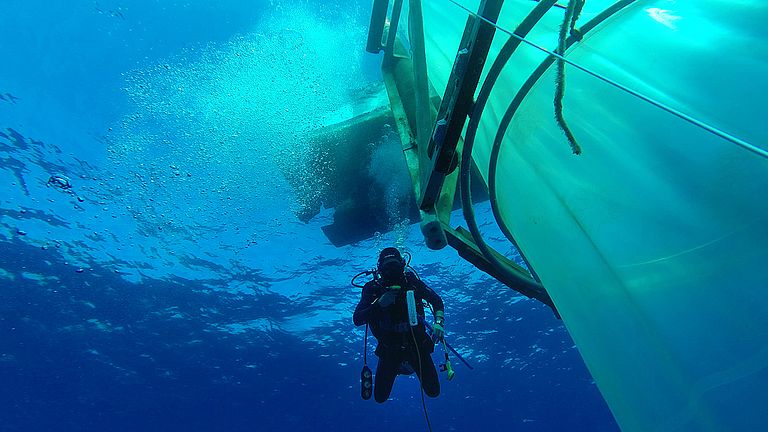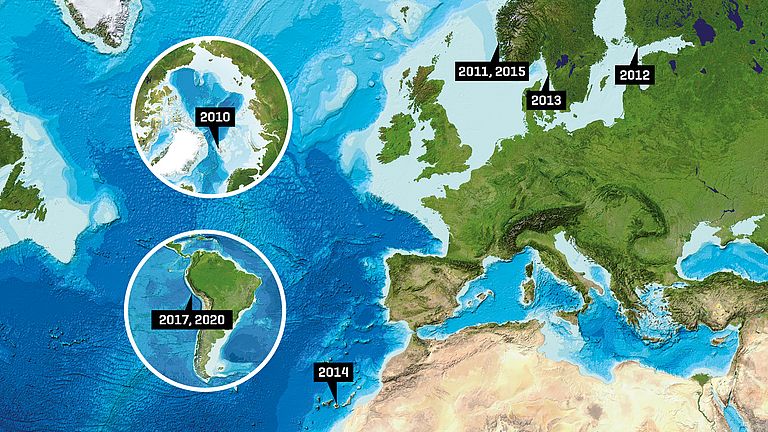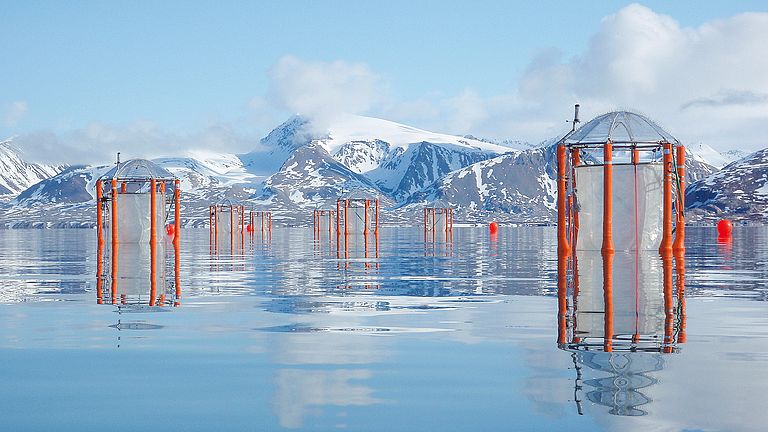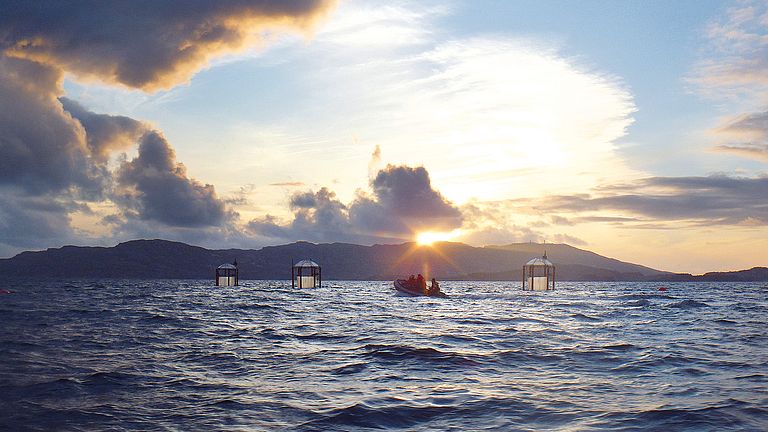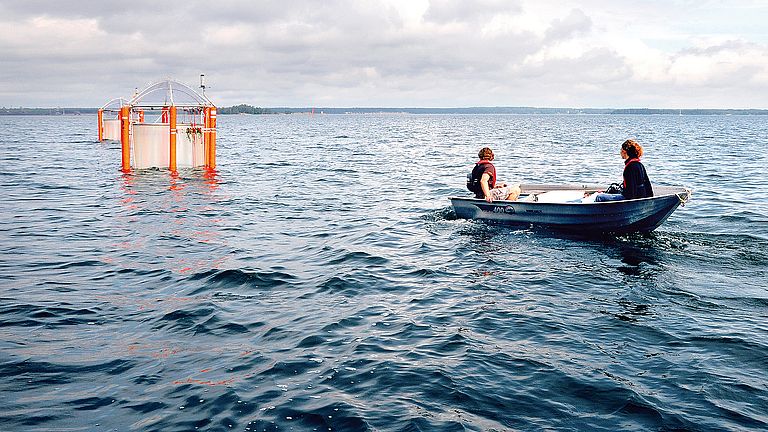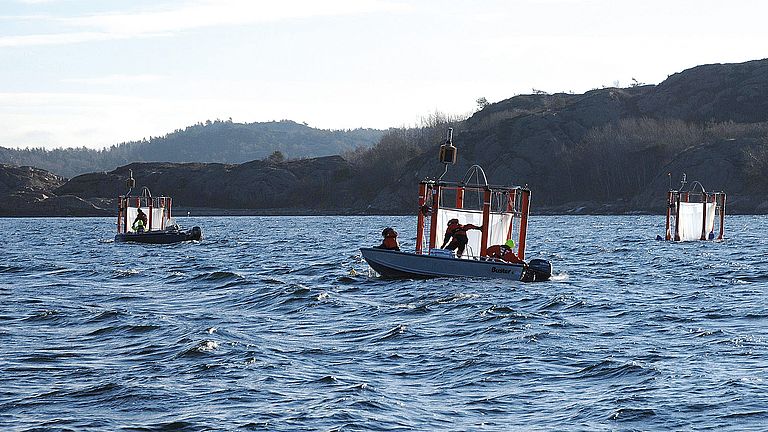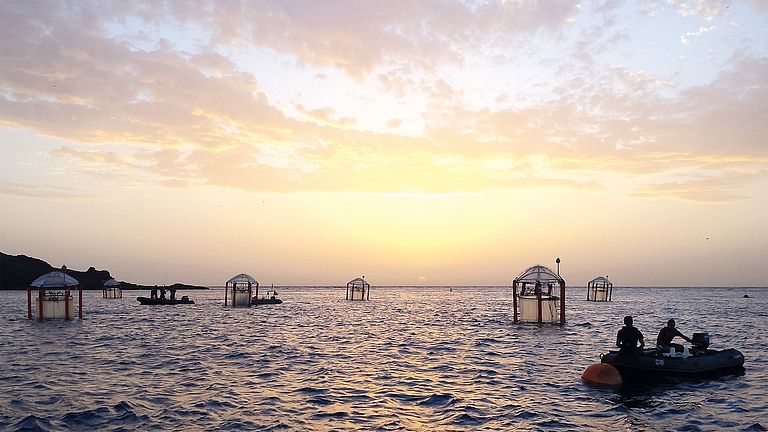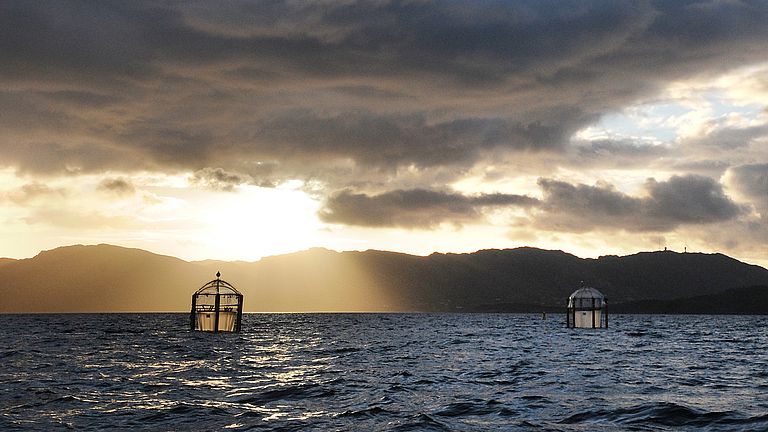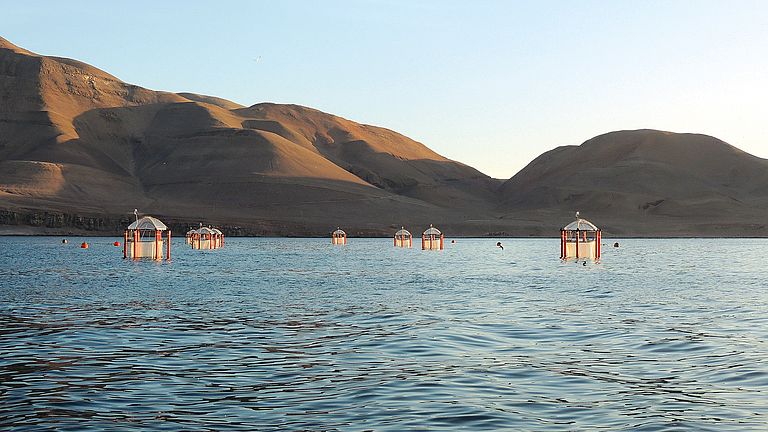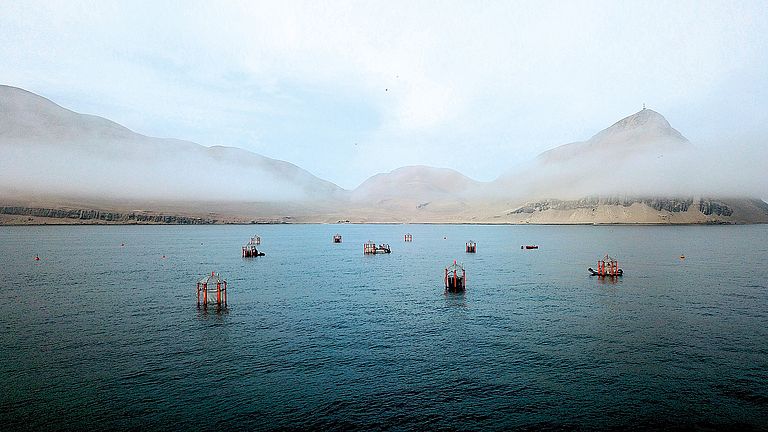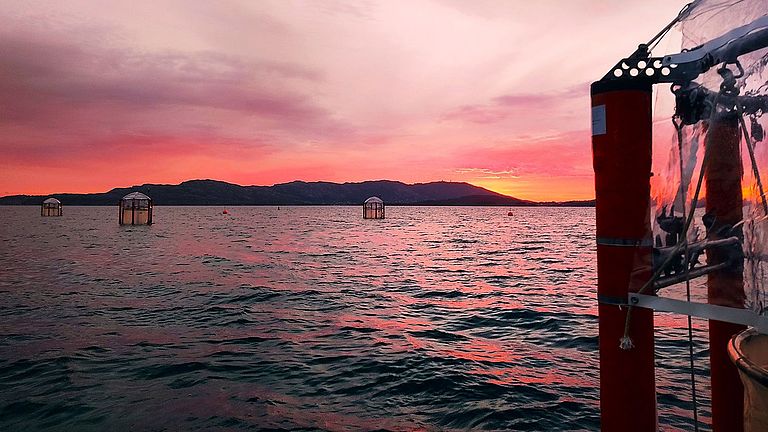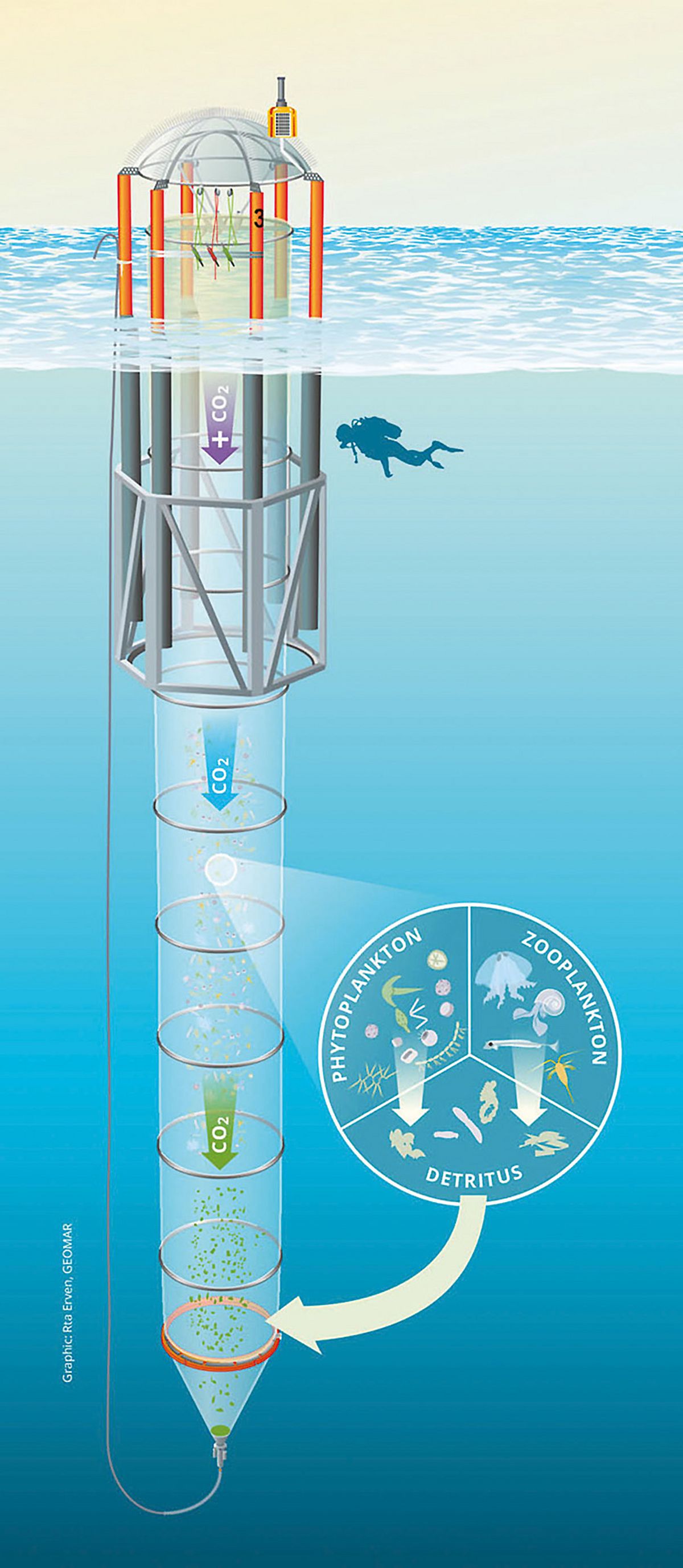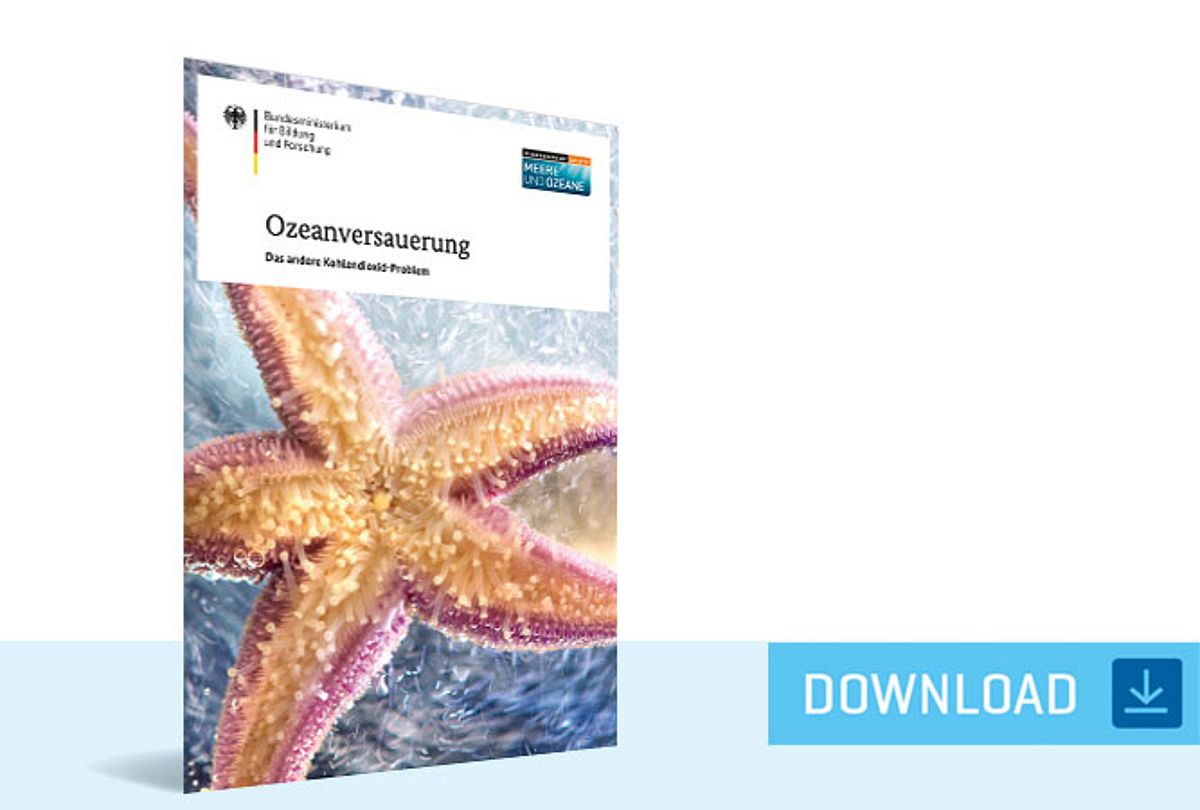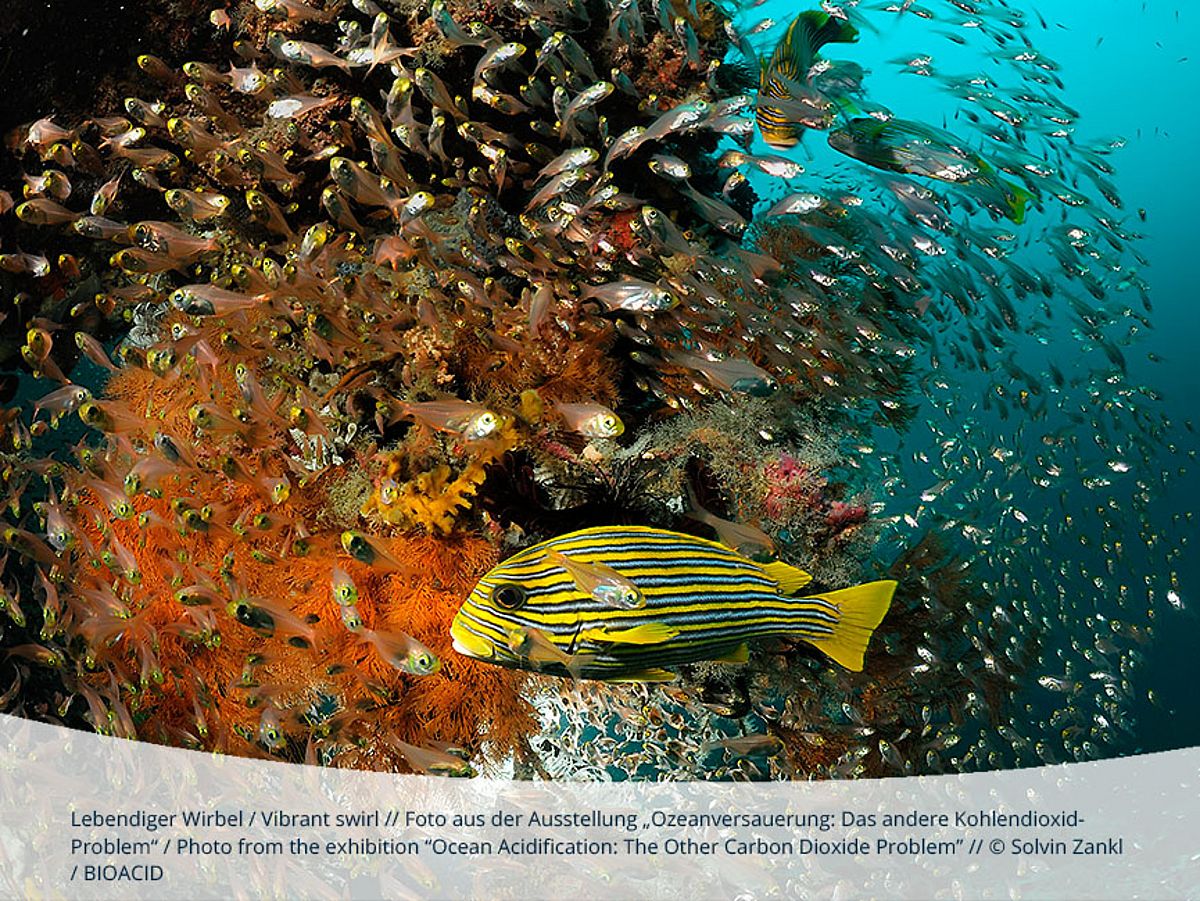KOSMOS Mesocosms - The Future in a Giant Test Tube
How do complex marine communities respond to ocean acidification over a long period of time? How do the reactions of individual species, but also of the entire plankton community, affect the material and energy cycles in seawater? How do these interactions affect the marine food web? The KOSMOS (Kiel Offshore Mesocosms for Future Ocean Simulations) mesocosms provide a glimpse into the ocean of the future: future conditions can be simulated in the enclosed worlds and the reactions of marine communities can be studied as in giant test tubes.
How a Mesocosm Works
GEOMAR is breaking new ground with its self-developed KOSMOS mesocosms: The experimental facilities can be transported and deployed on medium-sized research vessels. They can be deployed floating in bays and fjords or drifting freely in the open ocean. A further development has now made long-term experiments possible for the first time.
The 8.5 meter long frame of a KOSMOS system, made of plastic-reinforced fiberglass and steel, serves as a buoyancy body and to stabilize a plastic tube that is about 2 meters wide and up to 25 meters long. The mesocosms are transported to their respective locations by research vessel. When the floats are hoisted from the ship into the water by crane, the bags are still folded like an accordion. When lowered, each bag encloses a 55 cubic meter water column along with all the plankton organisms living in it. Attached to the bottom end is a kind of large funnel: the sediment trap, which collects all descending material from inside the mesocosm. Carbon dioxide-saturated water is then introduced into the mesocosm until the desired concentration is reached to start the experiment.
BIOACID Science Portrait: Ulf Riebesell
In this BIOACID Science Portrait, Ulf Riebesell tells you how the KOSMOS mesocosms, “giant test tubes”, help researchers to find out more about the reactions of plankton communities to ocean acidification – and what these field experiments mean to him.


